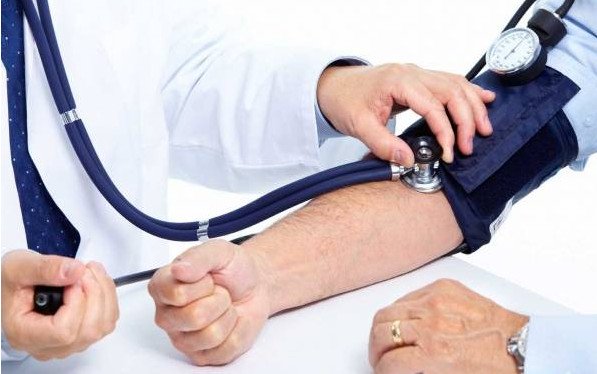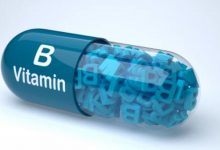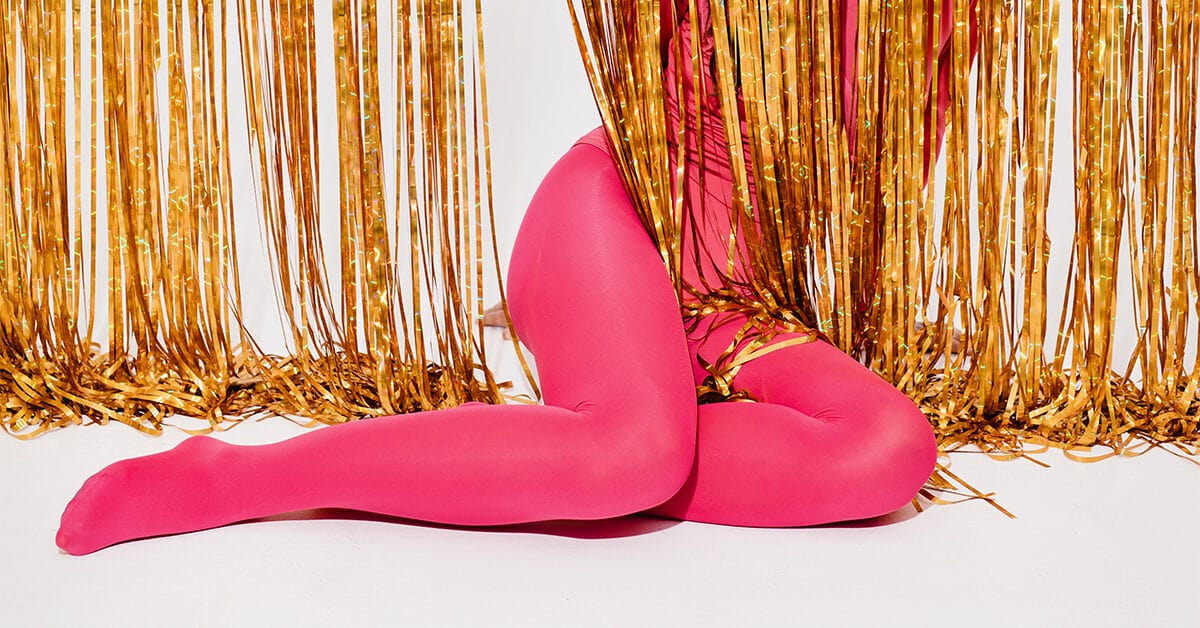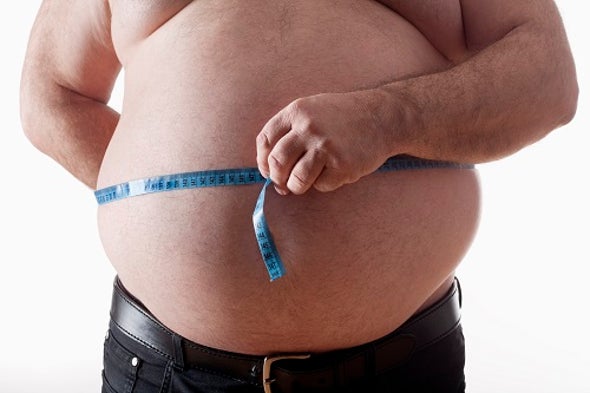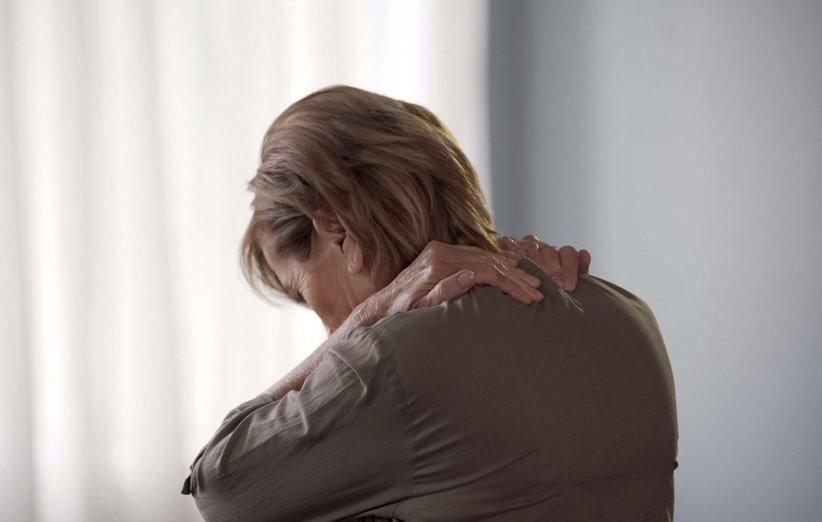Types of headaches and different methods of treatment
Headaches are defined as pain in the head or neck of the upper body. Pain arises from the tissues and structures surrounding the skull or brain because the brain does not have nerves that cause pain (pain fibers). The thin layer of tissue (bone covering) surrounding the bones, muscles, eyes, and ears and the thin tissue covering the brain and spinal cord (meninges), arteries, and nerves can cause inflammation.
- What is a headache, and how many types are there?
- What are dangerous headaches?
- What does a morning headache have to do with a brain tumor?
- What is a headache in different parts of the head?
- What are the symptoms of different types of headaches?
- What are the best home remedies for headaches?
- What are the immediate and definitive treatments for migraines and nerve headaches?
General types and categories of headaches:
There are three major categories of headaches based on the source of the pain.
- Primary headaches
- Secondary headaches
- Cranial nerve, facial pain, and other headaches
What are the primary headaches?
Primary headaches include migraines, nerve and cluster headaches, and other types of headaches.

Nerve headaches are the most common type of primary headache, and these nerve headaches are more common in women than men. According to the World Health Organization, one in 20 people in developed countries suffers from headaches daily.
Migraine headache is the second type of primary headache. Migraine headaches can affect children as well as adults. Before puberty, boys and girls suffer from migraine headaches equally, but women are more affected than men.
Cluster headaches are a rare type of primary headache. The disease generally affects men in the late 1920s, although women and children can also get this type of headache.
Many patients experience severe migraine headaches, but the amount of pain does not determine the diagnosis of migraine.
What are secondary headaches?
Secondary headaches are headaches caused by a structural or infectious problem in the head and neck. Whether toothache or sinusitis, medical conditions indicate serious illnesses such as bleeding in the brain or infections such as encephalitis or meningitis. Chronic headaches are among the most common post-traumatic headaches.
This group of headaches also includes headaches related to substance abuse and overuse of medications to treat headaches (alcohol abuse). People who drink too much alcohol may be due to the effects of alcohol.
What is cranial nerve headache, facial pain?
Inflammation describes one of the 12 cranial nerves coming from the brain, which controls the muscles and carries sensory signals (such as pain) from the head and neck. Perhaps the most commonly known example is the trigeminal nerve, which affects the cranial nerve and sensory nerves. The sensory nerve that nourishes the face can cause severe facial pain if irritated or inflamed.
16 types of headaches:
Different types of headaches depending on the class to which they belong. Some common types are:
- Primary nerve headaches that are accidental
- Primary chronic nerve headaches
- Primary migraine headaches with aura
- Head muscle contraction
- Primary migraine headaches with odor
- Odorless primary migraine headache
- Primary cluster headache
- Primary severe headache
- Headache to primary cough
- Early sex-related headaches
- Primary lightning headache
- Hypnotic headache (headache that wakes up)
- Hemicrania Continua (headache on one side only). Right or left [one way]
- Persistent Daily Headache (NDPH) (a type of chronic headache)
- Headache from scramble
- Triple nerve and other cranial inflammations
Causes of secondary headaches
These headaches happen for the reasons you read.
- Injury
- Irregularities
- Infection
- Structural problems in the bones of the face, teeth, eyes, ears, nose, sinuses, or other structures
- Misuse of drug use
What are the symptoms of a dangerous headache?
If your headaches are accompanied by dark vision, drowsiness, and dizziness, you should be examined and treated immediately.
The NHS believes that headaches can sometimes be caused by colds or the flu, which are common in winter. But stress, vision problems, dehydration, and drug overdose are other known causes of headaches.
Morning headaches are a sign of a brain tumor
We know that headaches are sometimes a sign of a serious illness, such as a brain tumor, especially if it occurs more often at other times of the day. A burning sensation in the arms and legs is less commonly used as a sign of a brain tumor, said a neurologist.
“Although in some cases the cause of headaches in adults is attributed to factors such as fatigue and environmental stress, these reasons do not apply to children,” said the neurosurgeon.
Headache due to improper nutrition
A team of researchers in a research project to identify foods that cause headaches examined specific foods.
Researchers have found that smoked or processed foods such as meat, fish, and vegetables that use compounds such as salt, sodium nitrate, or sugar are very effective in causing headaches.
Four types of headaches that are serious health warnings:
“When you have a headache, it’s a red warning reaction to the body, and they say you have to find the root of the problem and treat it,” said a neurologist. Today, four types of headaches are the most common type among people, and if you want to do the best treatment for it, pay attention to the continuation of this article.
Sinus headache
Sinus headaches are often caused by inflammation in the sinuses. This type of headache can be very severe and can cause a lot of infection and overheat your body, appearing on your cheeks and forehead and threatening your debilitating fever. To treat this headache, you should drink plenty of fluids and eat foods that contain vitamin C to get better sooner.
Tension headaches
These types of headaches are one of the most common headaches and bother you more than others. They can cause severe pressure and pain in your forehead, back, neck and temples, and you can use ginger tea to reduce it.
Eye headache
Eye headaches occur every once in a while and put a lot of pressure on the top of the eye until you have to open your eyes. It can also cause sudden pain in one side of your head, and it can be said that the cause has not been determined yet, and you can use cayenne pepper to treat it.
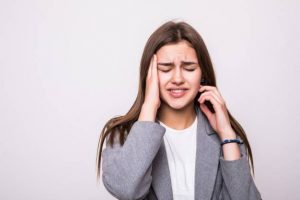
Migraine
Migraines can be the worst type of headache that can affect anyone, with symptoms such as dizziness, vomiting, blurred vision, and photosensitivity, which can be treated with omega-3s, vitamin B12 (riboflavin), and magnesium.
What are the symptoms of a nervous headache?
Pain starts in the back of the head and neck and is often described as a tight bandage or pressure. It may extend and surround the head. The greatest pressure may be felt on the temples or above the eyebrows where the forehead muscles are.
The severity of the pain may vary but usually does not paralyze the person, meaning that the patient may resume daily activities. The pain is usually bilateral (involving both sides of the head). The pain is not accompanied by nausea, vomiting, or sensitivity to light and sound.
Pain occurs sporadically (rarely and without a pattern), but it occurs frequently and even daily in some people. This pain allows most people to function normally despite the headache.
How are nervous headaches treated?
Nerve headaches are painful and can make daily activities more difficult. Many people successfully treat themselves with painkillers to control nerve headaches. The following are helpful for most people:
- Aspirin
- Ibuprofen (Motrin, Advil)
- Acetaminophen (Tylenol, Panadol)
- Naproxen
If the painkiller does not relieve the pain, replace it with another medicine. Other supportive therapies are available. The return of a headache is a sign of medical help. Physiotherapy, massage, biofeedback, and stress management can be used to control nervous headaches.
From the cause to the symptoms and treatment of the most common types of headaches:
Causes and treatment of the most common types of headaches, which include the following:
Migraine headache
Migraine pain starts with a weak head and blows. One migraine patient likened his pain to the sound of a chainsaw twisting in his head. The pain is usually on one side of the head and often starts around the eyes and temples. Also, if you have a migraine, you do not want to watch movies with Netflix because the sound, the light may make your pain worse, and you may feel nauseous. But wait, more! Headaches can last from 4 to 72 hours; while some people are lucky and get them once a month, migraines can often happen.
Causes of Migraine Headaches
What causes this headache: When it comes to migraines, the big question is: Can we blame biological, environmental, and dietary factors? Or a bit of both? About 70 to 80 percent of migraine sufferers have a family history. Migraines can be caused by seemingly harmless things, such as irregular sleep, bright or fluorescent lights, excessive noise, strenuous exercise, stress, and even certain foods (such as chocolate, alcohol, and cheese).
How is it treated?
Remembering a history of migraines may help identify stimuli that should be managed and avoided. While people need pills, nasal sprays, or even ampoules, certain painkillers can relieve pain. There are many alternative therapies, including biofeedback (awareness of the body’s physiological functions to learn to control them), acupuncture, massage, and even behavioral therapy.
Menstrual migraine
Not only is bloating and muscle cramps not enough, but some women get migraines during (before, after, or after) menstruation. This type of migraine causes throbbing, one-sided pain and, like other migraines, may be accompanied by nausea, vomiting, or sensitivity to sound or sound.
Causes of menstrual migraine
Changes in estrogen and progesterone levels during the menstrual cycle cause this migraine. A variety of birth control pills may affect estrogen levels
How is it treated?
Non-smoking and medication can help treat menstruation. Relaxation exercises, biofeedback, and acupuncture may also provide relief.
Cluster headache
Therefore, because these headaches occur “for a cluster period” of 4 to 12 consecutive weeks, they are called cluster headaches. They usually start a few hours after your night’s sleep (although they may occur at other times) and last from 15 minutes to 3 hours and cause pain in the back or near the eyes. They can cope with this pain one to three times a day during a cluster period. Even if you try to cope with cluster headaches, it is associated with nasal congestion, drooping eyelids, or puffy eyes.

Causes of cluster headaches
While the exact cause is unknown, the onset of cluster headaches appears to be related to the release of histamine (a chemical reaction in allergic reactions) or the neurotransmitter serotonin. Alcohol is associated with cluster headaches, and studies show that smokers are more prone to cluster headaches.
How is it treated?
Cluster headaches are difficult to treat because of the rapid onset of severe pain, and using pure oxygen through a mask can help and soothe most sufferers within 15 minutes. Medications called triptans – available as injections, nasal sprays, or pills – can also help treat cluster headaches.
Sinus headaches
This pain can not be confused with facial pain. If your face hurts, especially in the nose and eyes, cheeks, forehead, or upper teeth, you may have a sinus headache. If you shake your head suddenly, the headache usually gets worse, and you may have a runny nose, fever, and swelling of the face.
Causes of sinus headache
You can identify sinusitis as one of the causes. A cold infection can cause sinusitis, weakened immune system, or structural problems. If you have severe asthma and allergies or are regularly exposed to contaminants and irritants, you are more likely to get sinusitis.
How is it treated?
Headaches can be treated with incense, and nasal sprays, while nasal moisturizing kits can help clear the nasal passages and reduce inflammation. Prescribed methods include antibiotics (if bacteria cause the sinusitis) or saltwater sprays (sprays that reduce nasal inflammation and help reduce sneezing, itching, and runny nose).
Migraine-like headaches return
These headaches can be very frustrating, they may seem like tension headaches, or they may be more severe and migraine-like and recur every day and can last for hours.
reasons
As the name implies, headaches are caused by the overuse of headache medications. What is called “overuse” depends on the drug but can cause reactive headaches due to taking more than two days a week.
How is it treated?
Reducing or discontinuing sedatives is recommended: Your pain may get worse before recovery, and you may have temporary side effects (nausea, constipation, vomiting).
Tension headache
These are common headaches experienced by adults and are usually mild to moderate, characterized by severe pressure on both sides of the head. Although these headaches are very common, they are usually not long and last between 20 minutes and two hours.
reasons
Like migraines, relatively simple things like stress and fatigue can cause tension headaches. Looking to the left, strong sunlight, noise, heat or cold, or poor sitting can irritate them.
How is it treated?
Identifying, managing, and avoiding stimuli may help here. Ways to relax a balanced and healthy diet, And others can be helpful. Antidepressants can be used to treat reactive tension headaches. Some antidepressants can also help prevent seizures.
Caffeine headaches
Caffeine headache is a type of elastic headache caused by caffeine’s sudden and continuous cessation in foods, beverages, and medications.
reasons
Many of us approve of tea and coffee, but they can cause severe headaches for many people. Most decaffeinated people do not get headaches unless they consume 500 mg of caffeine daily.
How is it treated?
Caffeine headaches are temporary, and drinking coffee or other beverages can reduce the pain. Or the headaches are relieved as a result of a little effort to reduce caffeine intake; doing so gradually reduces the pain. Free treatments, such as decaffeinated beverages, provide restful sleep.

Sexual headaches
Sexual headaches (formally known as articular encephalopathy) are “severe and hot” during sexual arousal. The pain starts around the base of the skull and then spreads to the front of the brain. For some people, the headache starts as a sudden increase in pain before or during orgasm.
reasons
Although these pains are very common in people with migraines, sexual headaches are not associated with the underlying disease (although it is worth seeing a doctor because of the underlying problems).
How is it treated?
Beta-blockers (drugs that lower blood pressure), anti-inflammatory drugs, and triptans can be used to prevent sexual headaches. Going to bed early and breaking up is another treatment.

Tooth headache
This is not a headache when you remember that you have a dental appointment; this causes various stresses related to the teeth and jaw and eventually lead to pain in the back of the eyes, jaw muscles, or jaw joints. If you have a toothache, even Your scalp may get worse by touching your scalp.
reasons
Headaches due to toothache can be caused by excessive pressure, jaw muscles, or gas problems. Bruxism and jaw problems can also cause headaches.
How is it treated?
Pressing teeth and gnashing teeth are often caused by stress and anxiety. Relaxation techniques can help maintain facial and jaw muscles. Jaw stretching and ice packs can help relieve pain. Otherwise, the dentist should examine the tongue.
Ice cream headache
Unfortunately, if this is a transient pain, do not miss the pleasure of eating ice cream because your favorite frozen joy causes the cerebral artery to dilate (or dry out) quickly, causing pain in the forehead or behind the eyes and a blow to you. Be.
reasons
Frostbite is caused by the brain filling with blood (which causes pain) in response to the rapid consumption of beverages or very cold foods.
How is it treated?
Enjoy eating cold things slowly to keep your mouth warm so you can swallow whatever you want. If the pain is severe, keep your tongue on the roof of your mouth or cover the pain with hot drinks.
Dry headache
Dehydration can cause pain in any part of the head, one side, front or back, or even the whole body. Moving the head and bending the neck can make the pain worse.
reasons
Research has shown that blood vessels in your head may narrow to regulate fluid levels when your body is dehydrated. This, in turn, causes oxygen and hard blood to reach the brain, which causes headaches.
How is it treated?
Water! Fortunately, relieving a dry headache is usually as easy as drinking water, an electrolyte-free drink, or coconut water until you feel better. It stays well moisturized to prevent possible headaches in the future. If the weather is hot or you sweat a lot, drink more water than usual.
No matter what kind of headache you suffer from, it is good to look at your lifestyle in the first place. We all know the benefits of adequate sleep, a balanced diet, and regular exercise. These can also help manage headaches, and if you have headaches in your daily life, you should consult your doctor. Your doctor can rule out other factors that contribute to your pain and help design a treatment plan.
General and home remedies for headaches:
How to get rid of a headache?
Which home remedies are effective for headaches?
It should be noted that a health care professional may evaluate unusual headaches, but in most cases, primary neurological headaches may be treated at home first.
The first step involves maximum rest and staying hydrated.
If headaches are one of the main causes, diagnosing and minimizing stressful situations can be helpful.
If you have recently had a cold or runny nose, moist air may help clear your sinuses.
Massage on the temples, muscles, or muscles of the back of the neck can be soothing, even with a warm compress.
People with migraine headaches often have treatment plans and are treated at home. Other medications are available to treat nausea and vomiting. Many migraine sufferers relax after sleeping in a dark room.
Drinking plenty of water can relieve your headaches instead of headache pills. Herbal tea is also very effective in relieving headaches, and also teas such as mint and chamomile are effective in relieving headaches.
Several exercises such as jogging, brisk walking, swimming can strengthen blood circulation and be effective in overcoming headaches.
Cold compresses are also very helpful, so soak a soft cloth in cold water and place it on your forehead; this is a way to relieve pain.
Laughter therapy can also be effective in relieving headaches. Watching comedy movies and reading comic books are also very useful.
If you have a migraine headache, try to eat chamomile leaves daily because this plant contains a substance called parthenolide that can repel migraine attacks.
Drink mint or rosemary tea for muscle cramps. Pour a teaspoon of fresh or dried rosemary or mint into a cup of boiling water and wait 10 minutes. Then strain the tea and drink it a little three times a day.
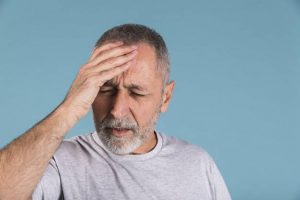
Treatment of headache with aromatherapy:
In this purification method, aromatic oils of plant and natural origin and prepared from different plants and trees are used. These oils are massaged on the skin or used by inhalation, thus stimulating the nervous system related to pain relief.
Treatment of headache with lavender oil:
Lavender oil is especially effective for headaches. Fill the tub with warm water and add a few drops of lavender oil and sleep for a few minutes.
But if you have a headache, use this oil for cold compresses. Soak a cloth in cold water in which you have poured three to four drops of lavender oil, and then press well to remove excess water. Press the temples, forehead, and neck with this cloth for five minutes.
You can also pour two drops of lavender oil on a small plate containing sweet almond or sunflower oil and massage the temples with this oil.
Immediate and home treatment of banana peel headache:
In this natural remedy, you need banana peel and some ice. Put a few pieces of ice inside the banana peel and cover it with a strip to keep the ice between the banana peels and put it on your forehead and rest for 20 minutes in a dark place; bring a towel to melt as soon as it melts.

